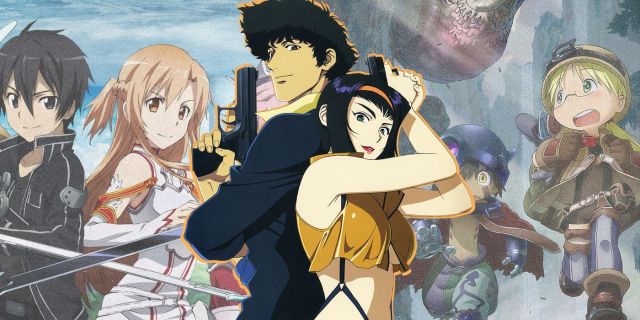While anime is becoming more and more mainstream and the medium is constantly gaining new fans, one of the most common statements seen by veteran Western fans online is that anime is progressively “getting worse.” The idea that anime has been steadily declining in quality ever since a certain point in time — typically, since sometime in the 2000s — seems especially prevalent among viewers who like to think back on the “good old days” of ’90s anime, albeit with arguably rose-tinted glasses.
However, as tempting as it may be to reflect on genre-innovating shows and beloved classics of the ’90s and earlier (e.g. Cowboy Bebop, Evangelion, Trigun, Serial Experiments Lain) and say that all or even most new anime can’t compare, this would be a major exaggeration. Instead, it would be far more accurate to say that anime caters to a very specific audience, and that current Japanese trends simply don’t align with what many Western viewers perceive as “good.”
Anime’s Target Audience Is Young – And Japanese

In the West, anime currently enjoys a robust level of online discourse in both personal blogs and vlogs and on community discussion sites such as Reddit, not to mention major anime-specific sites like MyAnimeList. However, what English-speaking anime fans often seem to forget is that anime is not directly designed for them. Even if they fit the gender and age demographics that many manga titles — and by extension, their anime adaptations — target, such as the most popular demographics of shonen (adolescent boys) or shojo (adolescent girls), the series still isn’t usually “for” them because anime is, by and large, still a domestic product. The fact that some anime is also popular overseas and has helped form a thriving global community is a happy byproduct, but not the reason for its creation.
With this in mind, it’s important to remember that anime creators whose first goal is to produce a popular series are concerned primarily with that anime’s popularity in Japan, not internationally. Subsequently, creators will be looking at Japanese trends rather than what’s considered cool outside of Japan, and these don’t always align. For example, the fact that there are currently so many isekai shows or rom-coms with similar story beats and character archetypes may be a major pain point for numerous U.S. viewers, but that doesn’t mean Japanese viewers are thinking the same thing. Similarly, while anime creators could, for instance, craft a Marvel-esque anime show about adult superheroes, featuring witty one-liners and slick action sequences, it might be a hit in America but not resonate as well with Japanese viewers.
Cliché Titles Don’t Mean Less Creativity

Along with anime being produced to cater primarily to Japanese audiences, whose preferred tastes and trends have obviously changed over the past 20+ years, Western viewers need to remember that there are now far more televised anime being released per season than there once were. In 2021, a Reddit user created some charts depicting the rise of anime each year from 1960-2020, and the numbers speak for themselves. While not exact given the imperfect data scraped from sites like AniDB, these charts show that although there were less than 20 televised anime released per year in 1970, that number increased to around 30 by 1980 and 1990, then to double that in the year 2000. By 2010, the yearly release of new titles had soared to over 120, and to almost 180 by 2020. This means that by now, over half of all anime (going on 5,000 titles in total) was released post-2010.
Naturally, this sharp increase in the number of new anime being released every year and every season means that especially unique and compelling titles have become more difficult to find. Nonetheless, more mediocre shows (at least by Western standards) doesn’t necessarily correlate to fewer exceptional ones — it’s just that anime fans need to look a little deeper to discover them from among the crowd. Although plenty of long-time Western anime viewers frequently decry that anime is no longer good, or even exaggeratedly proclaim that anime is “dying,” it’s possible to name numerous specific examples of newer anime that can be considered extremely creative, experimental or avant-garde — in short, standout productions by any measure.
From the brutally dark science-fantasy Dorohedoro and the deeply unsettling adventure series Made in Abyss to explorative psychological titles such as Wonder Egg Priority, the intensely surreal Flip Flappers and the visually innovative Keep Your Hands Off Eizouken, new anime is clearly being produced that challenges normative tropes, themes and archetypes. Far from an exhaustive list, this mere handful of contemporary shows helps to prove that anime can be just as inspired and pioneering as it was two or more decades ago, regardless of modern Japanese trends. Western viewers simply need to be open to receiving it.















Leave a Reply